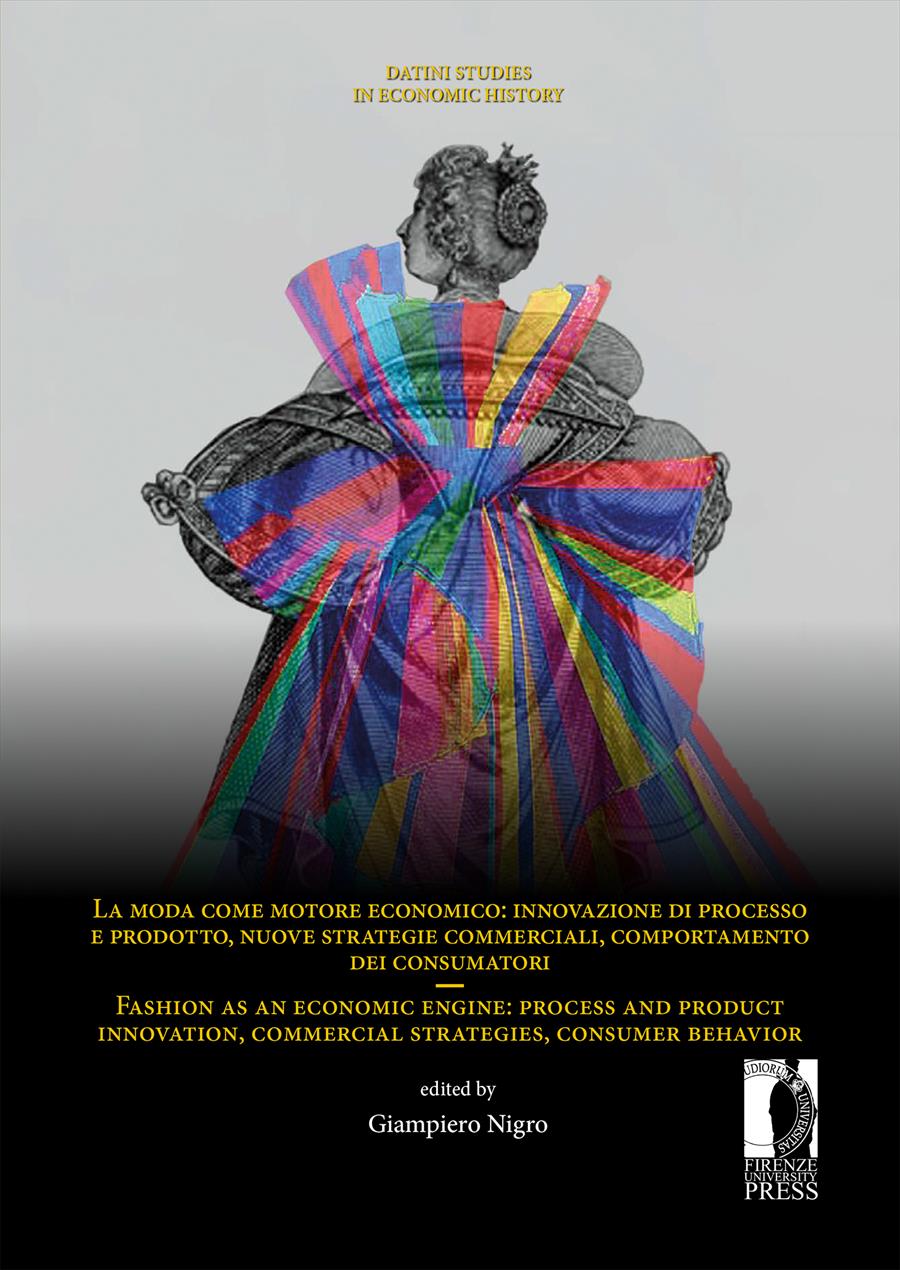Round Table comment. Fashion as an economic engine: continuity and change
- Maryanne Kowaleski
- © 2022 Author(s) |
- CC BY 4.0
- DOI: 10.36253/978-88-5518-565-3.23
This comment points out the medieval precedents of many developments characterized as new in the early modern manufacture, sale, and consumption of fashionable textiles and clothing, although these developments were more rapid and intense in the later centuries. There was, for example, a significant break in the traditional process of technological innovations in the second half of the eighteenth century, when a series of complementary inventions radically improved the production and quality of textiles. In terms of commercial strategies and consumer behavior, however, there was less significant change, although the role of the second-hand trade deserves closer attention. The comment ends by highlighting how speakers have drawn on new methodologies and sources fo understanding the relationship between fashion and the economy
- Keywords:
- fashion,
- innovation,
- shopping,
- consumer behavior,
- methodology,
Fordham University, United States - ORCID: 0000-0001-6103-777X
- Blondé, Bruno, Peter Stabel, Jon Stobart, and Ilia Van Damme, ed. 2006. Buyers and sellers. Retail circuits and practices in Medieval and Early Modern Europe. Turnhout: Brepols.
- Briggs, Chris and Ben Jervis. s.d. “Living Standards and Material Culture in English Rural Households, 1300-1600.” University of Cambridge and Cardiff University https://medievalobjects.wordpress.com/ (2021-11-30).
- Davies, Matthew, and Ann Saunders. 2004. The history of the Merchant Taylors' Company. Leeds: Maney.
- Depping, Georges Bernard. 1837. Réglemens sur les arts et métiers de Paris, rédigé au XIIIe siècle et connus sous le nom de Livre des métiers d'Etienne Boileau. Paris: Impr. de Crapelet https://gallica.bnf.fr/ark:/12148/bpt6k65349759/f477.item#
- Fontaine, Laurence, ed. 2008. Alternative Exchanges: Second-Hand Circulations from the Sixteenth Century to the Present. New York: Berghan Books.
- García Marsilla, Juan Vicente. 2013, “Avec les vêtements des autres: le marché du textile d’occasion dans la Valence médoévale.” In Ojets sous contraintes: circulation des richesses et valeur des choses au moyen âge, ed. Laurent Feller and Ana Rodríguez, 123-43. Paris: Publications de la Sorbonne
- Hansen, Gitte. 2015. “Luxury for everyone? embroideries on leather shoes and the consumption of silk yarn in 11th-13th century northern Europe”. In Textiles and the Medieval economy. Production, trade and consumption of textiles 8th-16th centuries, ed. Angela Ling Huang, and Carsten Jahnke, 86-103. Oxford-Philadelphia: Oxbow Books
- Fondazione Istituto Internazionale di Storia Economica “F. Datini”. s.d. Prato. http://www.istitutodatini.it/home_e.htm.
- Lemire, Beverley. 2012. “The secondhand trade in Europe and beyond: stages of development and enterprise in a changing material world c. 1600-1850.” Textile: Journal of Cloth & Culture, Special Issue 10: 144-63 DOI: 10.2752/175183512X13315695424392
- Museum of London. s.d. “Advanced search.” https://collections.museumoflondon.org.uk/online/search/#!/advanced (2021-11-30)
- Museum of London. s.d. “Dress and textiles.” https://www.museumoflondon.org.uk/collections/about-our-collections/what-we-collect/dress-and-textiles (2021-11-30)
- Museum of London. s.d. “Search results for ‘cap’.”https://collections.museumoflondon.org.uk/online/search/#!/results?pageSize=35&page=1&terms=cap&search=AND%3BdateFrom%3B%5B1100%20TO%201500%5D (2021-11-30)
- Owen-Crocker, Gale R., Mark Chambers, Louise Sylvester, and Pamela Walker. s.d. “Lexis of cloth and clothing project,” Manchester: Unversity of Manchester. http://lexissearch.arts.manchester.ac.uk/ (2021-11-30)
- Smail, Daniel Lord. 2016. Legal plunder. Households and debt collection in Late Medieval Europe. Cambridge, MA: Harvard University Press.
- Smail, Daniel Lord, Gabriel H. Pizzorno, and Laura Morreale. s.d. “Overview: the documentary archaeology of late medieval Europe.” Cambridge, MA: Harvard University. https://dalme.org/ (2021-11-30)
- Staples, Kate Kelsey. 2010. “Fripperers and the used clothing trade in late medieval London.” Medieval Clothing and Textiles 6, ed. Robin Netherton, and Gale R. Owen-Crocker, 151-71 Woodbridge: Boydell Press. DOI: 10.1111/hic3.12240
- Staples, Kate Kelsey. 2011. “Con-artists or entrepreneurs? Fripperers and market space in thirteenth- and fourteenth-century Paris.” Journal of Medieval History 43: 228-54. DOI: 10.1080/03044181.2017.1298322
- Staples, Kate Kelsey. 2015. “The significance of the second-hand trade in Europe, 1200-1600.” History Compass 13: 297-309 . DOI: 10.1111/hic3.12240
- Victoria and Albert Museum. s.d. “Search on ‘cap’, dates 100-1750.” https://collections.vam.ac.uk/search/?q=cap&year_made_from=1500&year_made_to=1750 (2021-11-30)
- Welch, Evelyn. 2005. Shopping in the Renaissance. Consumer cultures in Italy, 1400-1600. New Haven, CT: Yale University Press.
- Williams, Paul. 2020. “The trading community of Exeter 1470-1570 with special reference to merchants and tailors.” University of Exeter, Ph.D. thesis
Chapter Information
Chapter Title
Round Table comment. Fashion as an economic engine: continuity and change
Authors
Maryanne Kowaleski
Language
English
DOI
10.36253/978-88-5518-565-3.23
Peer Reviewed
Publication Year
2022
Copyright Information
© 2022 Author(s)
Content License
Metadata License
Bibliographic Information
Book Title
La moda come motore economico: innovazione di processo e prodotto, nuove strategie commerciali, comportamento dei consumatori / Fashion as an economic engine: process and product innovation, commercial strategies, consumer behavior
Editors
Giampiero Nigro
Peer Reviewed
Number of Pages
422
Publication Year
2022
Copyright Information
© 2022 Author(s)
Content License
Metadata License
Publisher Name
Firenze University Press
DOI
10.36253/978-88-5518-565-3
ISBN Print
978-88-5518-564-6
eISBN (pdf)
978-88-5518-565-3
eISBN (xml)
978-88-5518-566-0
Series Title
Datini Studies in Economic History
Series ISSN
2975-1241
Series E-ISSN
2975-1195
